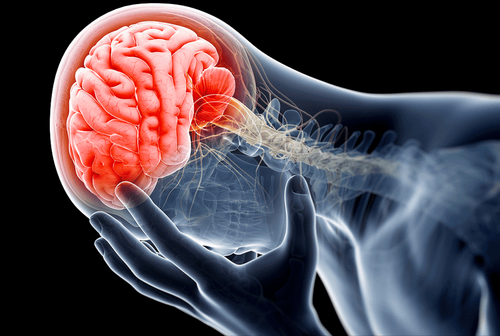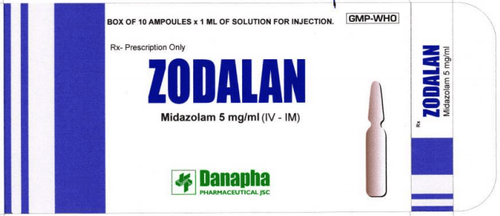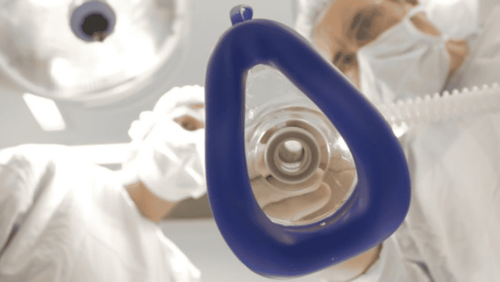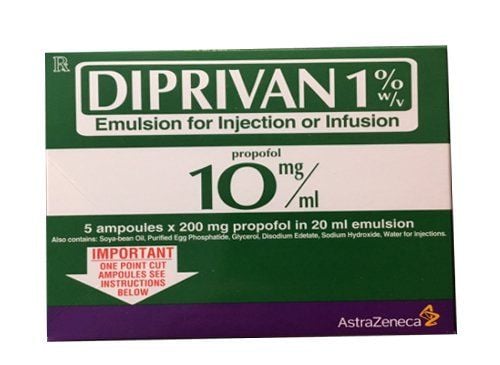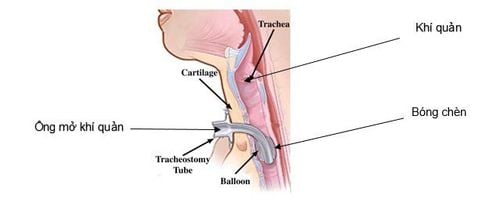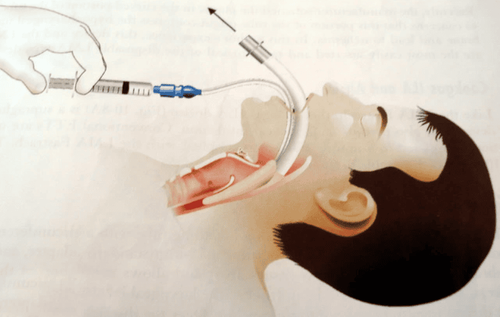This is an automatically translated article.
The article was professionally consulted by Specialist Doctor II Dinh Van Loc - Department of General Surgery - Vinmec Danang International General Hospital.
Induction of anesthesia is one of the phases of the anesthetic process. In any period of the anesthetic process, there can be complications caused by anesthetic drugs, the induction period is the most dangerous period when dangerous complications can occur due to the effects of the drug. anesthesia.
1. What is induction of anesthesia?
The stages of anesthesia include: pre-anesthesia, induction, maintenance and release of anesthesia.Induction of anesthesia starts from inhalation or intravenous anesthesia until the patient's condition is relatively stable in terms of consciousness, circulation or respiration. During this period, because the drug is only absorbed in the cerebral cortex, the patient is not completely stable, there are many fluctuations such as the patient's consciousness struggling, changes in circulation, breathing, even choking, cardiac arrest. ...
This period is the most dangerous period in the anesthesia period, so in this stage the surgeon only monitors and waits for the surgery to pass through this stage.
Currently, people often combine many drugs together with the aim of reducing the dose of each drug, increasing the anesthetic effect, reducing complications. It also lowers the rate of dangerous complications compared to using older drugs.
2. Drugs used to induce anesthesia

Thuốc nitơ oxit không được sủ dụng với bệnh nhân tắc ruột
2.1 Inhalation anesthetics Nitrogen oxide is a colorless, gaseous anesthetic.
The drug is used in combination with other drugs for anesthesia (initiation and maintenance of anesthesia) in major and prolonged surgery.
Contraindications to nitrous oxide drugs
*Absolutely: Patients with traumatic brain injury causing loss of consciousness, pneumothorax.
*Relative: Patients with intestinal obstruction, shock, bleeding, hypoxia, coronary artery disease, heart failure, sickle cell disease.
When using this drug to induce anesthesia, some unwanted effects may occur such as:
Lack of oxygen when the blood concentration is greater than 70%.
May cause nausea, vomiting.
Halothane group anesthetic
Is a volatile, colorless liquid anesthetic anesthetic, including some drugs such as Halothane, Sevorane...
Drugs used in surgical anesthesia to initiate and maintain anesthesia during surgery Surgery in adults and children, outpatient anesthesia
Contraindications:
*Absolute: Personal or family history of malignant hyperthermia, halogen sensitivity, porphyria
*Relative : Pregnant women, nursing mothers, do not use to induce anesthesia with children under two years old.
When using halogen drugs to induce anesthesia may cause undesirable effects:
May cause complications of epiglottitis edema leading to respiratory failure
Circulatory arrest, respiratory arrest
Vomiting and nausea
Fever malignant
2.2 Intravenous anesthetics
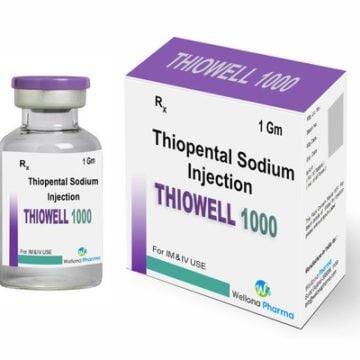
Thuốc Thiopental là một trong các loại thuốc mê tĩnh mạch
* Thiopental
Indications for induction and maintenance of anesthesia are often combined with other drugs.
Contraindications:
*Absolutely: Lack of resuscitation facilities should not be able to use anesthesia for outpatients. Porphyria, bronchial asthma, history of allergy to barbiturates.
*Relative: Liver failure, kidney failure, coronary failure, severe heart failure. Anemia, malnutrition.
Undesirable effects: Causes irritation, muscle tremors at the onset of anesthesia, cough, vomiting and nausea, may cause circulatory arrest.
Ketamine
Indications: Used for anesthesia (initiation and maintenance of anesthesia) alone or in combination with other drugs, the advantage of this drug can be anesthesia for elderly patients, children, patients with asthma bronchi, burns, anesthesia in obstetrics, patients in shock state, combined with regional anesthesia.
Contraindications:
*Absolutely: Disorders of porphyrin metabolism. Lack of means of resuscitation without outpatient anesthesia. Cerebrovascular accident, increased intracranial pressure, brain aneurysm. Coronary heart failure, hypertension, new myocardial infarction. Pregnant women with preeclampsia, eclampsia.
*Relative: Hyperthyroidism; patients addicted to alcohol and drugs; epilepsy, schizophrenia; eye surgery, oropharyngeal surgery, bronchial surgery.
Undesirable effects: Causes vomiting and nausea, increased salivation can cause asphyxiation, decreased or stopped breathing, hallucinations, psychomotor agitation.
*Etomidate
Indications
Used for short surgeries, where outpatient anesthesia is possible.
Advantage in induction and maintenance of anesthesia for patients with bronchial asthma, coronary artery disease, valvular heart disease, heart failure, hypertension, shock, increased intracranial pressure.
Contraindications
*Absolute: Untreated adrenal insufficiency, unstable epilepsy, lack of resuscitation facilities.
*Relative: Patients with liver failure, pregnant women, children under two years old, have metabolic diseases or genetic diseases.
Undesirable effects of the drug include: Vomiting and nausea are uncommon, when the patient is in anesthesia, they may be excited and move abnormally. May cause pain at the injection site.
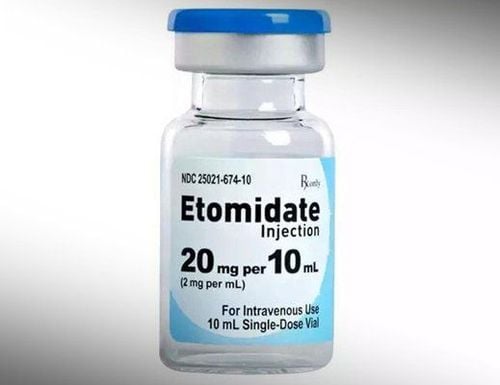
Thuốc Etomidate được Chỉ định với bệnh nhân bị bệnh hen phế quản
Indications
Initiation and maintenance of anesthesia for all types of surgery, outpatient anesthesia.
Used in conjunction with regional anesthesia .
Contraindications
*Absolute: Lack of emergency resuscitation facilities.
*Relative: Unstable epilepsy, pregnant women, children under three years old. Use with caution in patients with dyslipidemia.
Undesirable effects: Vomiting and nausea are uncommon. May cause decreased and stopped breathing during induction and maintenance of anesthesia, causing pain at the injection site. Hypotension is common in the elderly.
3. Complications encountered during induction of anesthesia

Huyết áp hạ có thể gặp trong quá trình khởi mê
Doctor Dinh Van Loc graduated as a General Doctor in Hue in 1990, graduated as a Specialist Doctor in 2003 and as a Specialist Doctor in Anesthesiology and Resuscitation in 2017. Dr. Loc received advanced training in Anesthesiology. Anesthesiology and resuscitation and has more than 23 years of experience working in pediatric intensive care anesthesia, cranial nerve anesthesia, anesthesia resuscitation for liver resection, esophagectomy at Hospital
General Hospital Vinmec International is one of the hospitals that not only ensures professional quality with a team of leading doctors, modern equipment and technology, but also stands out for its comprehensive medical examination, consultation and treatment services. representative, professional; civilized, polite, safe and sterile medical examination and treatment space.
Customers can directly go to Vinmec Health system nationwide to visit or contact the hotline here for support.





